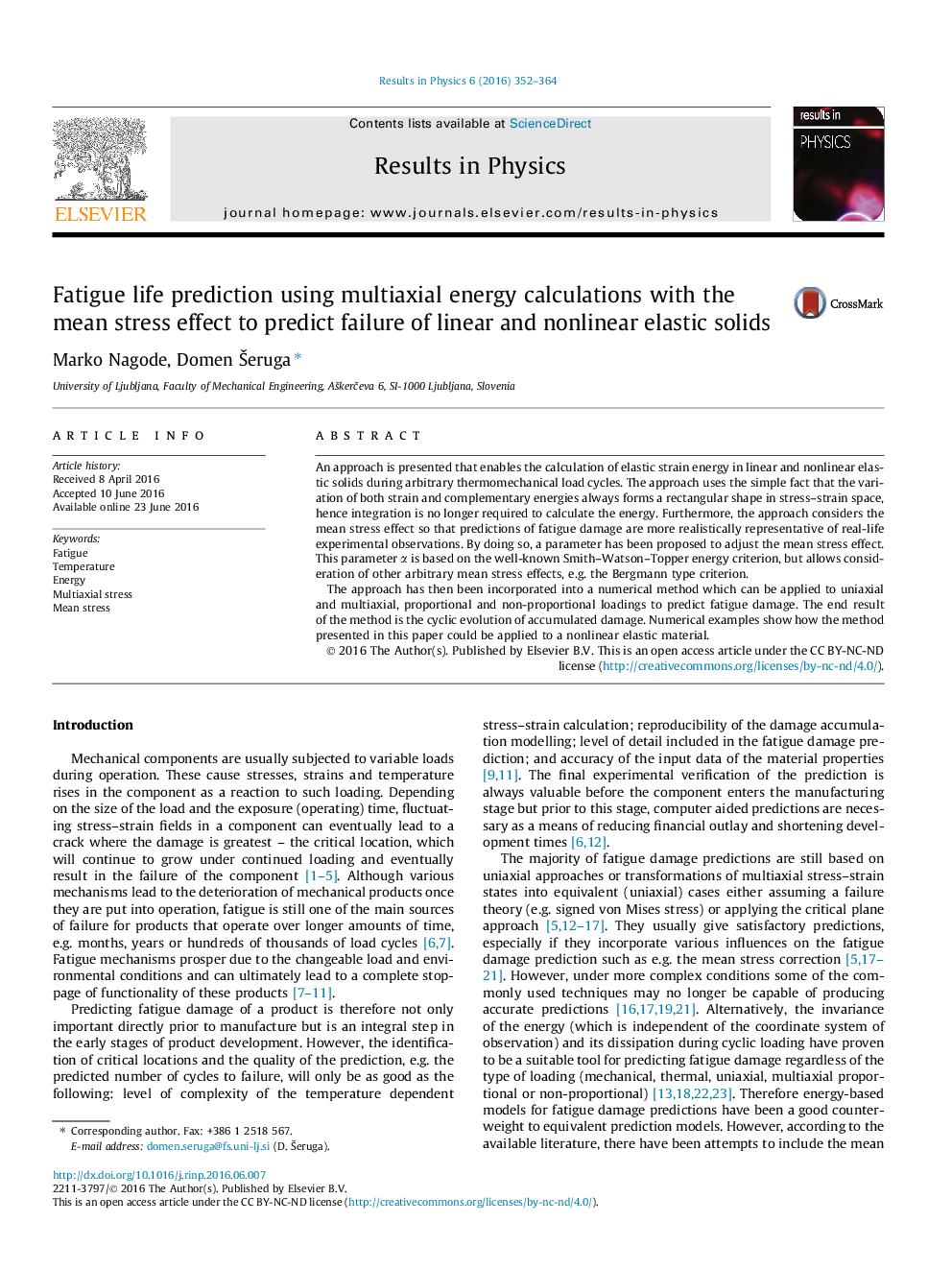| کد مقاله | کد نشریه | سال انتشار | مقاله انگلیسی | نسخه تمام متن |
|---|---|---|---|---|
| 1875496 | 1041799 | 2016 | 13 صفحه PDF | دانلود رایگان |
• Fatigue life can be predicted for variable thermomechanical loadings.
• An arbitrary mean stress effect can be considered.
• Integration to calculate the energy is no longer required.
An approach is presented that enables the calculation of elastic strain energy in linear and nonlinear elastic solids during arbitrary thermomechanical load cycles. The approach uses the simple fact that the variation of both strain and complementary energies always forms a rectangular shape in stress–strain space, hence integration is no longer required to calculate the energy. Furthermore, the approach considers the mean stress effect so that predictions of fatigue damage are more realistically representative of real-life experimental observations. By doing so, a parameter has been proposed to adjust the mean stress effect. This parameter αα is based on the well-known Smith–Watson–Topper energy criterion, but allows consideration of other arbitrary mean stress effects, e.g. the Bergmann type criterion.The approach has then been incorporated into a numerical method which can be applied to uniaxial and multiaxial, proportional and non-proportional loadings to predict fatigue damage. The end result of the method is the cyclic evolution of accumulated damage. Numerical examples show how the method presented in this paper could be applied to a nonlinear elastic material.
Figure optionsDownload as PowerPoint slide
Journal: Results in Physics - Volume 6, 2016, Pages 352–364
